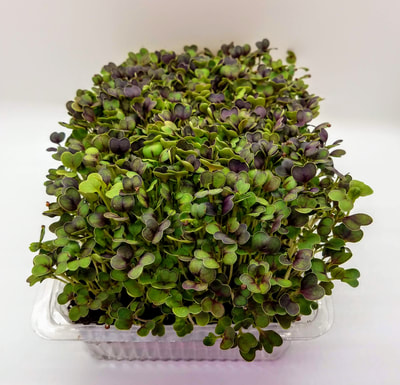 In an earlier blog "Cress to Supercress" published back in 2016 we described creating an even more potent microgreen by using blue single sourced LED lights. Our original light system finally failed so we replaced them with larger (24W vs 10W) blue LED lights. With our new growing systems we have also cut down the grow times considerably. Our new test setup was done growing dahong pak choi or purple chinese cabbage. We chose this plant due to quick growth and the purplish colors which are markers for anthocyanins in the plants. These anthocyanins are believed to help prevent CVD (Cardio Vascualar Disease), cancer, and may help cognitive function. Our initial tests were run on the cabbage grown for 10days under the same conditions and planting density. The only difference is that the sample on the left was exposed to the blue LED lights for the final 3 days of growing. There is a significant size and color difference between the blue crop and the control. Notice how much stronger the plants were (the leaves on the blue were so dense that the leaves were fighting for space) and the colors showing the deeper and stronger purple coloration. Note that both samples were grown under red/blue LED's initially and for the duration on the control sample. We will be running further tests and production under the blue LED's and look forward to increasing the nutritional value of our microgreen crops.
0 Comments
|
UrbaformUrbaform is a technology integrator and developer specializing in food production in the urban environment ... Archives
February 2020
Categories |





 RSS Feed
RSS Feed